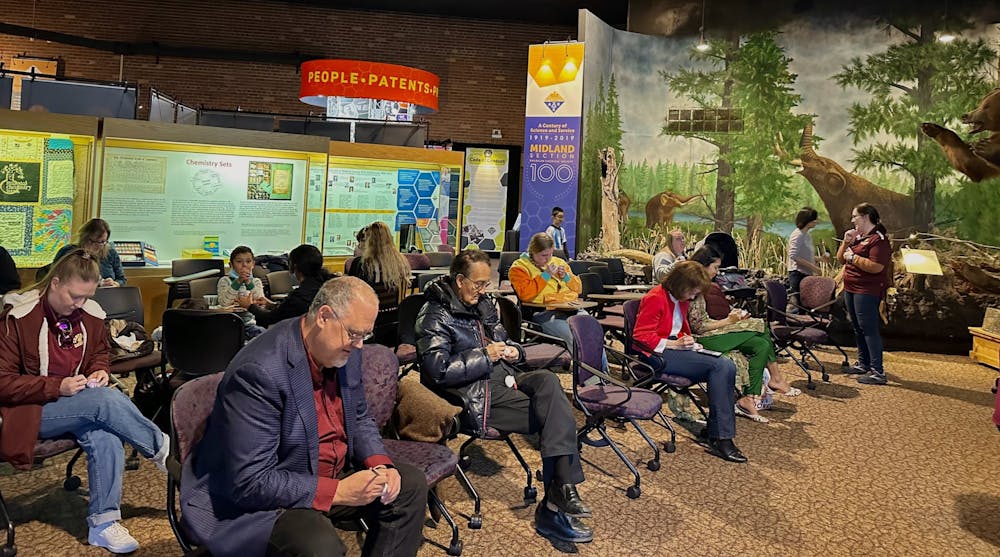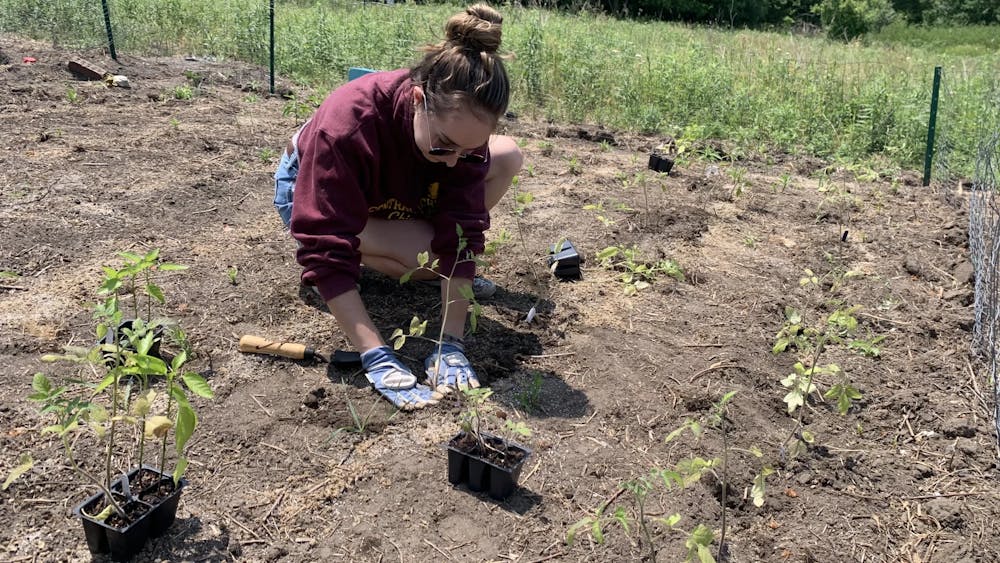International students host culture walk
On Friday, April 7, Central Michigan University students and community members filed into the lobby of Rowe Hall to learn about different countries and traditions from across the world.
For over two hours, international students from countries such as Spain, Ghana, India, Ukraine, Mongolia and a Native American student spoke to seemingly endless lines of attendees about their individual cultures. Equipped with poster boards filled with pictures and various information, these students shared their experiences with listeners while others participated in hands-on activities and crafts.
“Offering this type of opportunity where people can connect to people all over the world is just really powerful and helpful,” Rebecca Patrone, CMU Museum of Cultural & Natural History educator/technologist said.
“Having educational programs like this allows students to get a good experience working with groups in public,” Patrone said. “But it also helps us spread awareness that [the Museum of Cultural & Natural History] is here and we’re a resource.”

Culture walk participants decorate an Easter egg Friday, April 7 in Rowe Hall
From fun facts, to history lessons, to arts and crafts, each station gave attendees a chance to learn a little about life and culture in countries across the world. With activities such as making “passports” at the Spain station to crafting Ukrainian Motanky dolls and Pysanky eggs, each culture was well represented throughout the event.
“We [CMU] have a lot of international students, but we don’t have a lot of [cultural] awareness,” Carolina Hernandez Ruiz, international student and representative from Spain said. “Having places like this inspires people to be more interested in other cultures and have more awareness.”
Each student representative was given the opportunity to share a specific aspect of their culture or give a general overview of the culture as a whole. The Spain, Ghana and India stations were all complete overviews, focusing on food, history and traditions. The Mongolian, Ukrainian and Native American stations focused on a more specific aspect of their culture: Mongolian nomadic life, Ukrainian dolls and eggs and Native American floral art.
“Knowing about people's culture helps you to be able to understand them for who they are, and how they do things the way they do,” Sarah Akiti, international student and representative from Ghana said. “We are all diverse and different.”
For those two hours, a 30-45 students and community members alike all filled into the lobby of Rowe Hall. Lines formed at each individual station, while the representatives taught attentive ears.
As the number of international students on campus continued to rise, the museum wanted have students from the actual countries do the teaching instead of faculty, Patrone said.
“It’s a much more authentic experience,” Patrone said.
Not only did this event give students an opportunity to practice their public speaking skills and learn about cultures across the world, it also provided a space for international students to express themselves and represent their countries.
“My culture is a part of me,” said Masha Smahliuk, an international student from Ukraine, and a member of the CM-Life staff. “It is a part of who I am. It's a part of my history. I came to the U.S. as an exchange student, and my exchange program has been always teaching us that we are ambassadors of our culture.
“I always felt my role in the U.S. was to represent my culture.”







